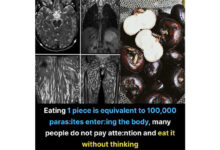These Tiny Eggs And Nests In Your Yard Belong To Hummingbirds And They Are Protected By The Law
When conducting yardwork this year, take a closer look at your shrubs and trees before cutting; there could be tiny hummingbird nests nestled away in their branches. Everyone knows that hummingbirds are small creatures, but their nest and eggs are extremely small. For example, a typical hummingbird nest weighs around one-tenth of an ounce. The Ruby-throated Hummingbird’s nest is about the size of a thimble. What about the eggs? They are around the size of jelly or navy beans.
It’s easy to overlook something as small as a thimble if you’re not looking for it. However, the issue is not only the size of the nest; it is also where the female hummingbirds choose to build their small houses. Mama hummingbirds nest in protected settings such as shrubs and trees, but they can even set up camp on your porch, garage, or even your clothesline. Nests are frequently constructed where branches fork.

The hummingbird makes the outside of the nest out of twigs, plant fibers, moss, and leaves, binding it with spider silk from spider webs and tying it to the limb. She surrounds her eggs with fluffy fibers from several plants to create a comfortable, warm habitat on the inside. She normally lays two eggs, incubating them for 15 to 18 days. Once hatched, the chicks rely on their mother for food and care for 18 to 28 days before setting off on their own.
The mother carefully camouflages the nest with these natural, delicate materials to hide it from predators, but this can also make it difficult for humans to find. So the government warned anyone with a yard to look for tiny nests and even smaller eggs before trimming.
“Hummingbird eggs are tiny, about the size of jelly beans!” The United States Fish and Wildlife Service took to social media. “Please remember to carefully check for nests before you trim trees and shrubs this spring.” Their admonition is straightforward and nonthreatening. Did you know that messing with most bird nests is illegal?

Bird nests that are “active” (i.e., have birds or eggs) are legally protected. Tampering with or moving the nest is prohibited unless you have a special permit. Even yet, such permits are rarely obtained. In fact, even if you wish to maintain an empty nest for educational purposes, you would most likely need a state and/or federal authorization due to the 1918 Migratory Bird Treaty Act, which is governed by federal law.
Hummingbirds are swift creatures, able to flap their wings 80 times in one second. They eat a lot, and frequently, because they move so much and expend so much energy. Though they enjoy sipping flower nectar, they also consume a variety of insects for protein, including mosquitoes, spiders, gnats, and fruit flies. They don’t fly far for food, so if you see a female hummingbird near your house, her nest is probably nearby. Share this post to save these small nests from being destroyed!

